27 July 2007
Day 28
Fulbright Project
The “project” is beginning to come together (at last!). Jeff French, the NSMC director and I discussed it again yesterday and decided that developing a draft framework of an American National Strategy for Social Marketing in Public Health would be a useful exercise both for the England (mainly because it is based, in part, on my observations of the NSMC and the development of social marketing here), and possibly for the US. I am not aware of a US national strategy, or of an ongoing discussion regarding a plan for its development. According to a few colleagues, there have been discussions in the past, but they were abandoned without resolution.
Admittedly, it is presumptuous that I should undertake such a task—certainly alone, perhaps at all. I am not a “patron saint” in the social marketing field, by any means. But I believe that social marketing can and does make an important contribution to public health (and to other areas of “public good”). Also I believe that we need to realign the disconnects between public policy, funding, research, training, professions and practice (including partnerships with other sectors) if we are to realize the full potential of social marketing in the US. It’s a big challenge, but if I can only revive the discussion and help to give it momentum, it may be a worthwhile endeavour.
The contrast between the US and England is becoming clearer to me after a few weeks of observation. England created a policy umbrella at the highest levels of government—including the Department of Health (DH), the NCC/NSMC and several other governmental agencies. This appears to result from a large amount of luck (being in the right place at the right time with the right people) and taking advantage of opportunities created through hard work and vision. The key players plan to work out along the ribs of the umbrella, as it were, to bring in other policy partners and expand the overall field. Also, the NSMC identified 10 demonstration sites (under its contract with the DH) and works with them to train staff and provide technical assistance. These activities, along with an incredible number of superb supportive documents, meetings, plans and other excellent work by a small core staff, support the policy-level infrastructure with the potential for stimulating an ever-wider penetration of social marketing into the national, regional and local levels.
According to one report, there are number of academic centers involved in social marketing teaching and research in the UK, but only one has a robust, long term program. Otherwise, teaching and research in social marketing is described as being “relegated to modules within other degree programs.” Obviously, the success of social marketing at the policy level and its intended extension into practice raises the question of “who is going to train social marketing professionals in the future?” So although the English model has real strengths, there are also clear challenges.
The US, on the other hand, seems to approach social marketing from a more combined academic and pragmatic point of view—as counterintuitive as that may sound. There are several key US academic centers offering social marketing training and research, (although I am not sure there is a current and systematic listing of these programs). The RI Department of Health has hired several regionally-trained public health professionals over the past few years with real expertise in social marketing. Many more of us got our training from the USF National Conference on Social Marketing in Public Health, or from the associated field schools and related activities. In addition, the Robert Wood Johnson Foundation (RWJF) funded the Turning Point Initiative. Started in 1997, Turning Point created a network of 23 state partners and five National Excellence Collaboratives to transform and strengthen the public health system in the United States. Although the program has closed, many of its products are archived on the turning point website http://www.turningpointprogram.org/ and are available for use. Obviously, the participating states and others still benefit from involvement in this excellent program.
It appears that one could describe the evolution of social marketing in the US as more of a “grass roots” approach rather than a policy approach. In other words, a few key academic centers have produced modest sized classes of students prepared in social marketing practice; some expanded these programs into conferences and special schools. At the same time, an increasing number of state and local health agencies, as well as private, voluntary organizations are using social marketing-based interventions. Unlike England, the US does not have a social-marketing friendly policy (e.g. designated funding and exclusive status as a public health intervention) at the highest levels or a series of documents and plans to promote social marketing throughout the governmental and public/private practice sectors. This may change with the relatively new Coordinating Center for Health Marketing and Communication at CDC. However, as far as I am aware, neither country has policies to fully address the development of social marketing in the academic and professional (competencies, benchmarks, and certification) sectors.
So, once again, my apologies to more knowledgeable colleagues for any errors or misconceptions in this analysis, so far. I hope that you will give me your encouragement, advice and point me in the right direction for more information.
26 July 2007-07-27
Day 27
Wicked Good Time!
Last night Linda and I went to see “Wicked” the rave London musical telling the story behind the two witches in Oz: Glinda, the “good” witch and Elphaba, the “wicked” witch. It was a wonderful production—one of the best I have ever seen! The cast portrayed their characters with energy and style, the voices were wonderful, the choreography thrilling and the sets fantastic. The sets included a backdrop of moveable panels with gigantic gears and levers and other mechanical devices. And the flying monkeys were so believable! They reminded me of the authenticity of the feline characters in Cats; after a while I forgot they were actors!
Friday, 27 July 2007
Subscribe to:
Post Comments (Atom)






















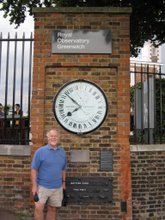
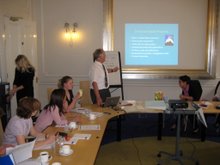
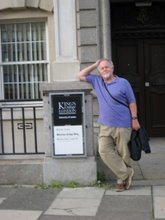


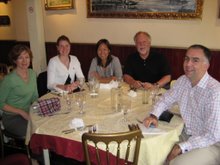
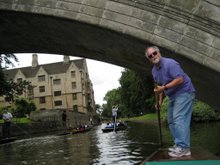
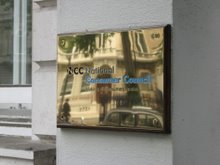

No comments:
Post a Comment